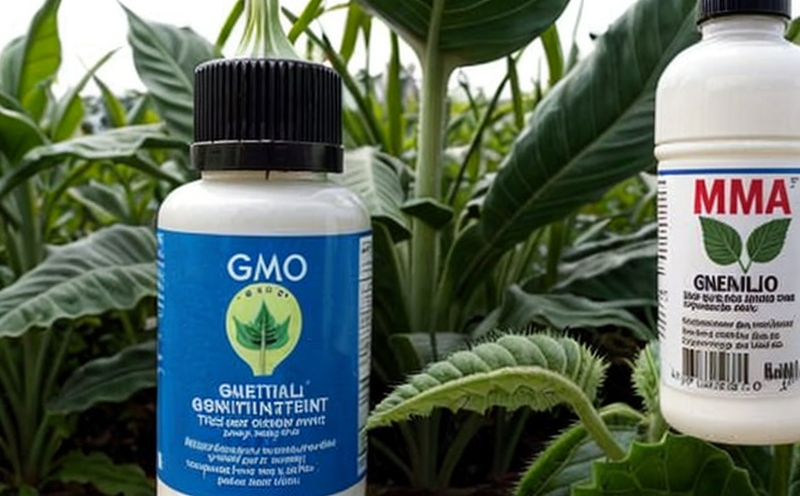ISO 29873 Real-Time PCR GMO Quantification in Bakery Products
The International Organization for Standardization (ISO) has developed ISO 29873, which provides a robust framework for the quantification of genetically modified organisms (GMOs) using real-time polymerase chain reaction (PCR). This standard is particularly relevant to the food and feed testing sector, where ensuring the accurate identification and quantification of GMOs in bakery products is crucial. Bakery products often contain ingredients that may have been derived from GMO sources, and consumers' growing interest in transparency has led to increased demand for reliable GMO detection methods.
The ISO 29873 method ensures accurate and reproducible results by specifying the use of real-time PCR technology with appropriate primers and probes. This approach allows for precise quantification of target DNA sequences, enabling laboratories to meet regulatory requirements and ensure product integrity. The standard also addresses the complexities associated with processing bakery samples, which can be challenging due to their complex matrix.
One critical aspect of this testing is sample preparation, as it directly influences the accuracy of the results. Samples must undergo thorough homogenization and DNA extraction to remove interfering agents such as fats, proteins, and sugars that are common in bakery products. Properly prepared samples ensure that the real-time PCR assay can accurately detect and quantify GMOs.
Real-time PCR technology is particularly well-suited for this application due to its high sensitivity and specificity. This method allows laboratories to measure even small quantities of target DNA, making it ideal for quantifying GMOs in trace amounts. The use of standard curves derived from known concentrations of the target GMO provides a reliable means of quantification.
The ISO 29873 standard also emphasizes the importance of quality control and assurance throughout the testing process. This includes the use of positive and negative controls, as well as proficiency testing, to ensure consistent results across different laboratories. By adhering to these standards, food manufacturers can maintain compliance with regulatory requirements and build consumer trust by providing transparent information about their products.
Real-time PCR GMO quantification is not only beneficial for ensuring product integrity but also plays a crucial role in supporting sustainable practices within the food industry. Consumers are increasingly concerned about the environmental impact of their purchasing decisions, and the ability to accurately quantify GMOs helps manufacturers make informed decisions regarding ingredient sourcing and formulation.
Regulatory compliance is another key driver for implementing this testing method. Many countries have established regulations governing the labeling and traceability of genetically modified organisms in food products. ISO 29873 provides a harmonized approach that aligns with these regulatory requirements, ensuring that laboratories can meet global standards consistently.
Scope and Methodology
| Aspect | Description |
|---|---|
| Sample Preparation | Homogenization, DNA extraction, and purification to remove interfering agents. |
| Real-time PCR Assay | Use of specific primers and probes targeting the GMOs of interest. |
| Data Analysis | Quantification using standard curves derived from known concentrations. |
| Quality Control | Incorporation of positive and negative controls, proficiency testing. |
The ISO 29873 standard outlines a comprehensive methodology for quantifying GMOs in bakery products using real-time PCR. This includes detailed procedures for sample preparation, ensuring that the sample is suitable for accurate DNA extraction. The assay itself relies on specific primers and probes designed to target the genetic markers of interest. Data analysis involves generating standard curves based on known concentrations, which allow for precise quantification of GMOs present in the samples.
Quality control measures are an essential component of this testing process. Positive controls ensure that the PCR reaction works correctly, while negative controls help identify any contamination or errors during sample preparation. Proficiency testing further enhances reliability by validating results across different laboratories. By adhering to these stringent protocols, laboratories can produce accurate and reliable quantification data.
Why Choose This Test
- Precision: Real-time PCR provides highly accurate quantification of GMOs.
- Regulatory Compliance: Aligns with international standards for labeling and traceability.
- Sustainability: Supports sustainable practices by ensuring product integrity.
- Consumer Trust: Builds confidence through transparent ingredient information.
- Rapid Results: Real-time PCR offers quick turnaround times compared to traditional methods.
- Cost-Effective: Efficient use of resources reduces overall testing costs.
- Consistency: Standardized procedures ensure consistent results across different laboratories.
The ISO 29873 real-time PCR method is an essential tool for food and feed testing labs, particularly in the bakery sector. Its precision and reliability make it a preferred choice for ensuring product integrity and meeting regulatory requirements. By choosing this test, labs can align with international standards, support sustainable practices, and build consumer trust through transparent ingredient information.
Environmental and Sustainability Contributions
The ISO 29873 real-time PCR GMO quantification method plays a significant role in supporting environmental sustainability within the food industry. By accurately identifying and quantifying GMOs, manufacturers can make informed decisions about ingredient sourcing and formulation, which is crucial for reducing the environmental impact of their operations.
One key benefit is reduced waste. Accurate GMO detection allows manufacturers to optimize resource use by selecting ingredients that are not only safe but also sustainable. This minimizes unnecessary production and disposal, contributing positively to environmental conservation efforts.
In addition, this method supports traceability, which is essential for ensuring product integrity throughout the supply chain. By accurately quantifying GMOs at every stage of production, manufacturers can trace the origin of ingredients more effectively. This not only enhances product safety but also promotes transparency and trust with consumers.
The use of real-time PCR in conjunction with ISO 29873 standards also encourages innovation within the food industry. By adhering to these standards, labs can stay at the forefront of technological advancements, which is critical for addressing emerging environmental challenges. This approach fosters a culture of continuous improvement and ensures that the food sector remains aligned with global sustainability goals.





